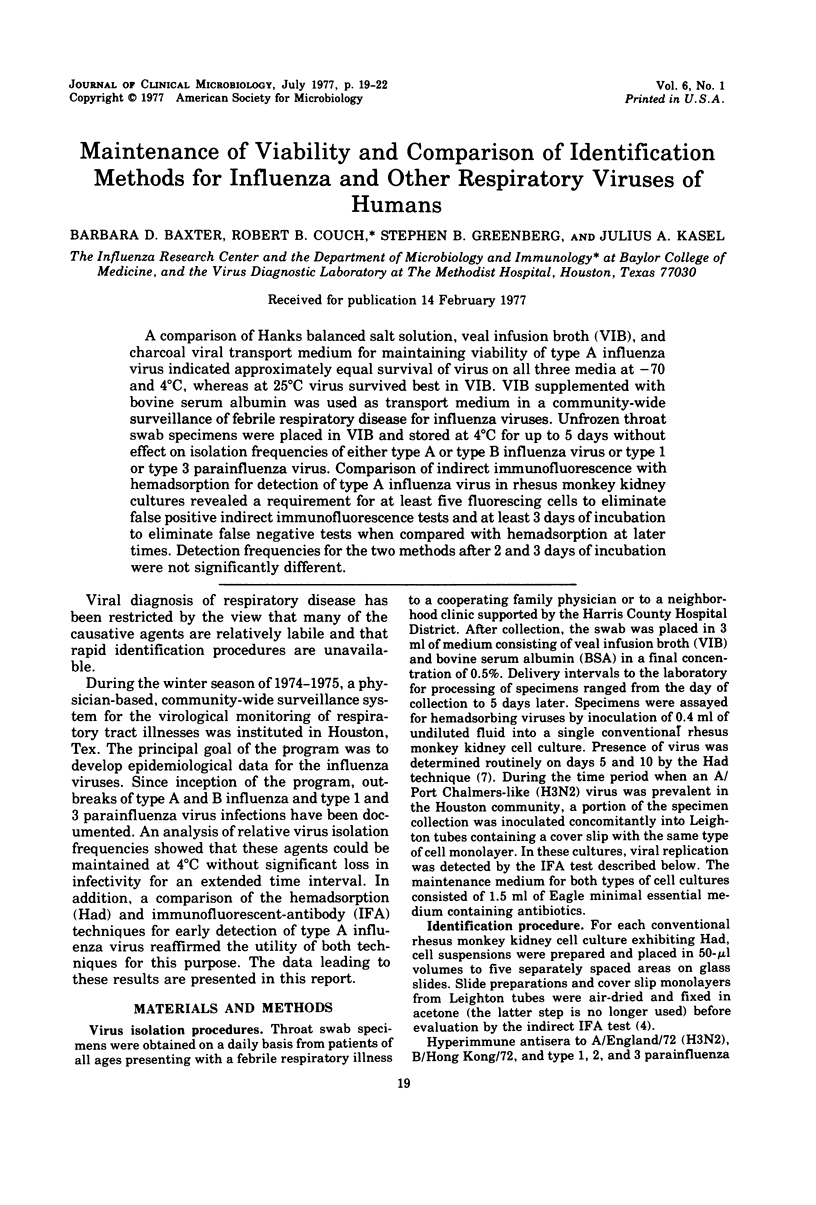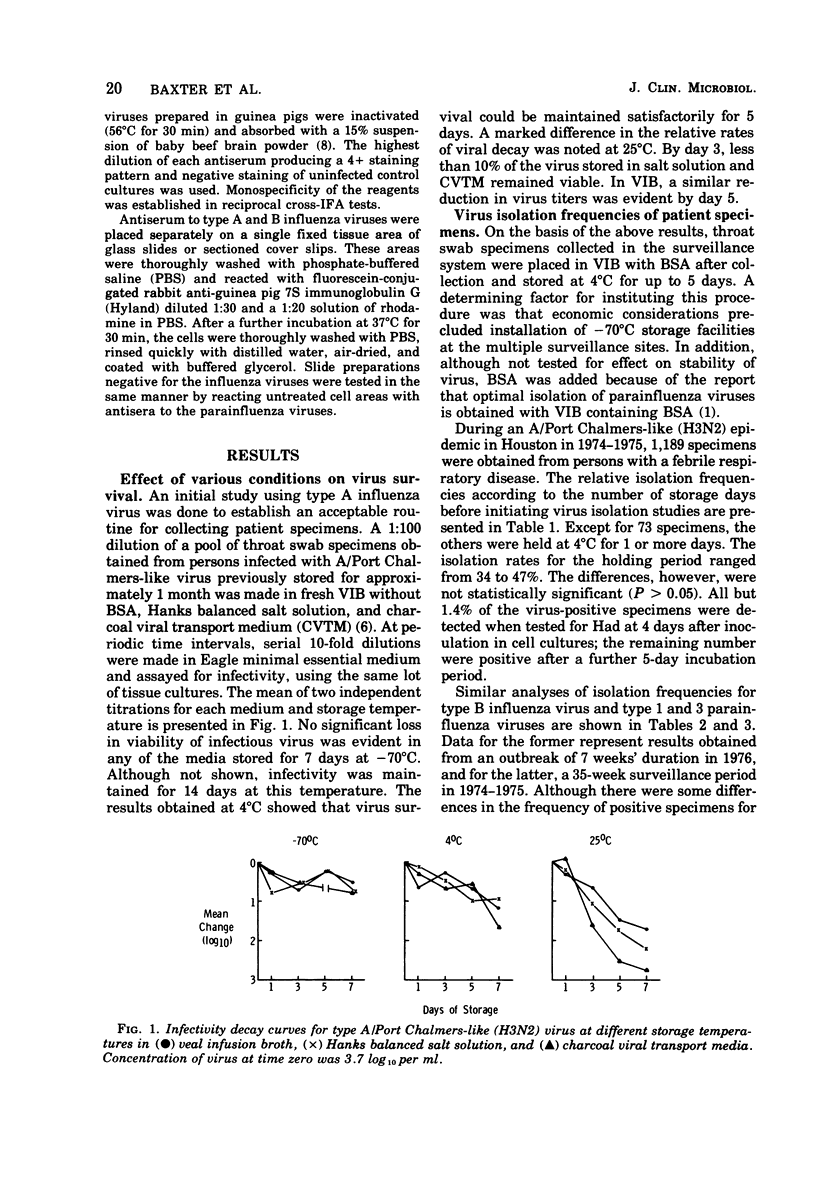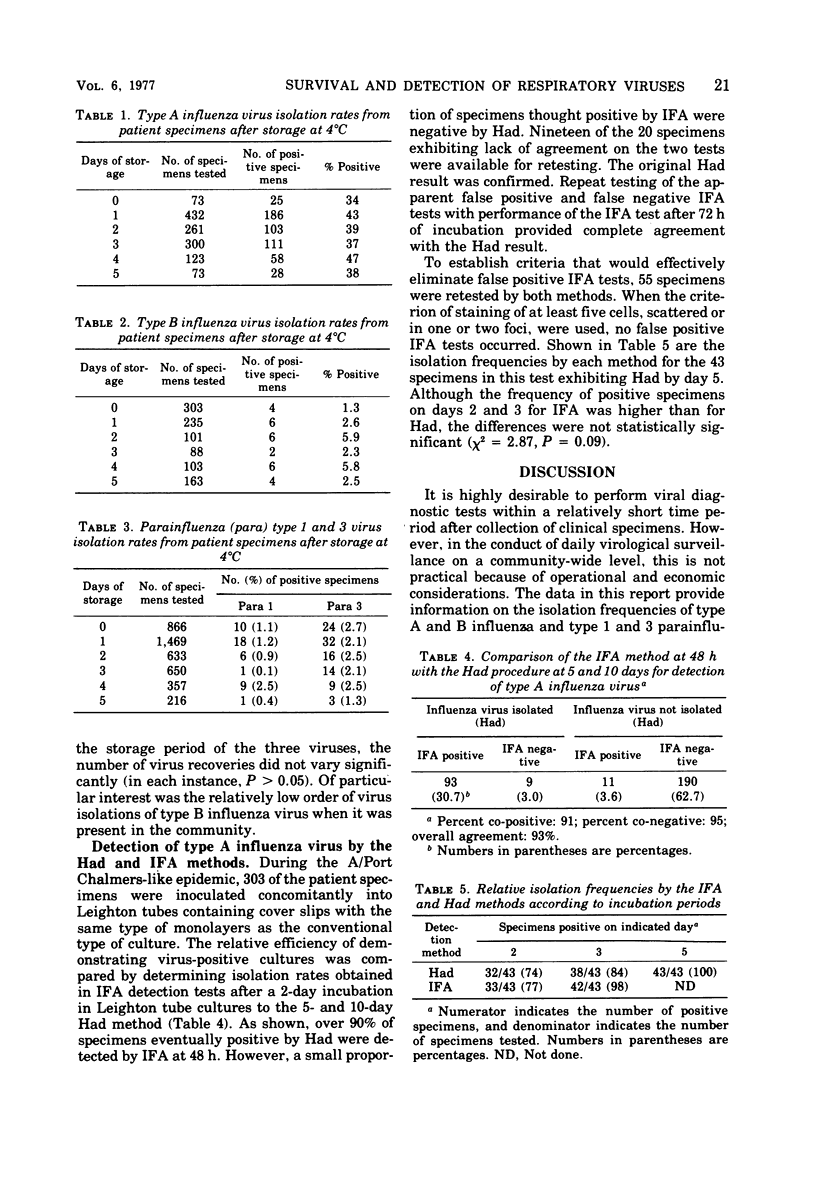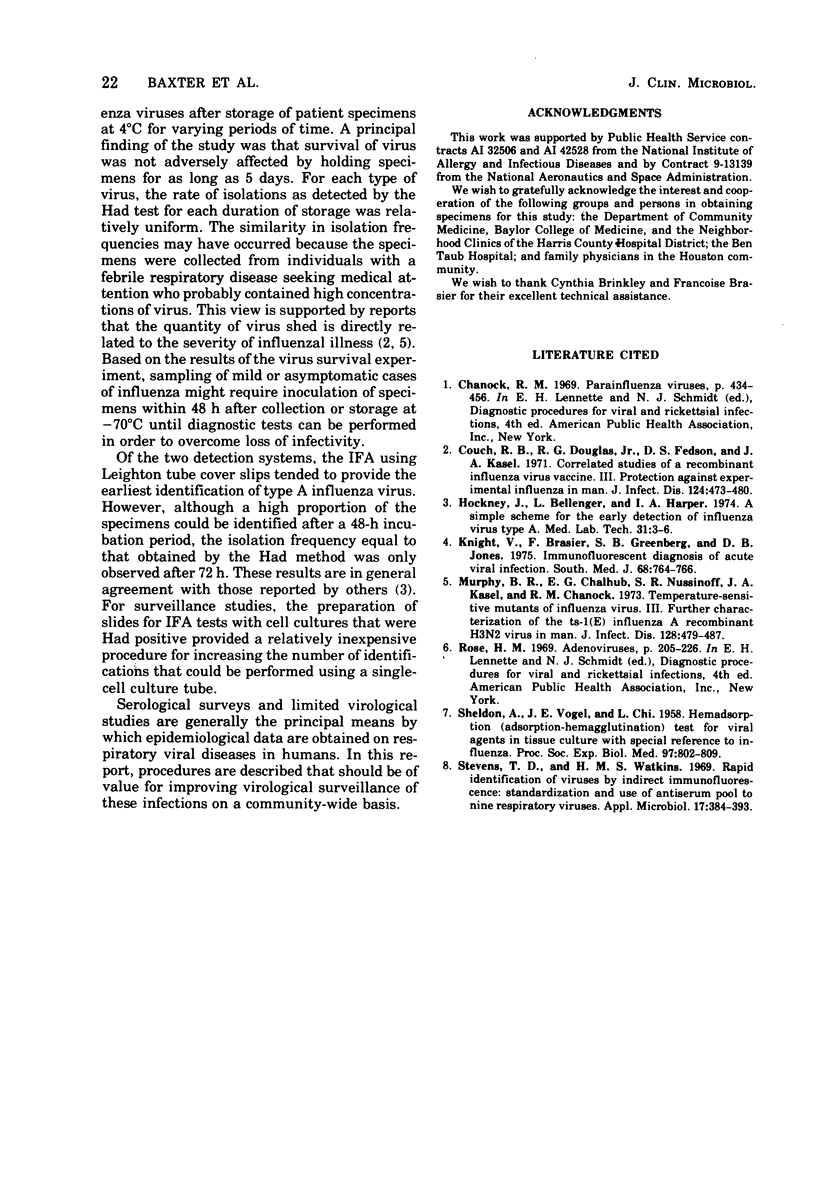Abstract
A comparison of Hanks balanced salt solution, veal infusion broth (VIB), and charcoal viral transport medium for maintaining viability of type A influenza virus indicated approximately equal survival of virus on all three media at -70 and 4 degrees C, whereas at 25 degrees C virus survived best in VIB. VIB supplemented with bovine serum albumin was used as transport medium in a community-wide surveillance of febrile respiratory disease for influenza viruses. Unfrozen throat swab specimens were placed in VIB and stored at 4 degrees C for up to 5 days without effect on isolation frequencies of either type A or type B influenza virus or type 1 or type 3 parainfluenza virus. Comparison of indirect immunofluorescence with hemadsorption for detection of type A influenza virus in rhesus monkey kidney cultures revealed a requirement for at least five fluorescing cells to eliminate false positive indirect immunofluorescence tests and at least 3 days of incubation to eliminate false negative tests when compared with hemadsorption at later times. Detection frequencies for the two methods after 2 and 3 days of incubation were not significantly different.
Full text
PDF



Selected References
These references are in PubMed. This may not be the complete list of references from this article.
- Couch R. B., Douglas R. G., Jr, Fedson D. S., Kasel J. A. Correlated studies of a recombinant influenza-virus vaccine. 3. Protection against experimental influenza in man. J Infect Dis. 1971 Nov;124(5):473–480. doi: 10.1093/infdis/124.5.473. [DOI] [PubMed] [Google Scholar]
- Hockney J., Bellenger L., Harper I. A. A simple scheme for the early detection of influenza virus type A. Med Lab Technol. 1974 Jan;31(1):3–6. [PubMed] [Google Scholar]
- Knight V., Brasier F., Greenberg S. B., Jones D. B. Immunofluorescent diagnosis of acute viral infection. South Med J. 1975 Jun;68(6):764–766. doi: 10.1097/00007611-197506000-00027. [DOI] [PubMed] [Google Scholar]
- Murphy B. R., Chalhub E. G., Nusinoff S. R., Kasel J., Chanock R. M. Temperature-sensitive mutants of influenza virus. 3. Further characterization of the ts-1(E) influenza A recombinant (H3N2) virus in man. J Infect Dis. 1973 Oct;128(4):479–487. doi: 10.1093/infdis/128.4.479. [DOI] [PubMed] [Google Scholar]
- SHELOKOV A., VOGEL J. E., CHI L. Hemadsorption (adsorption-hemagglutination) test for viral agents in tissue culture with special reference to influenza. Proc Soc Exp Biol Med. 1958 Apr;97(4):802–809. doi: 10.3181/00379727-97-23884. [DOI] [PubMed] [Google Scholar]
- Stevens T. D., Watkins H. M. Rapid identification of viruses by indirect immunofluorescence: standardization and use of antiserum pool to nine respiratory viruses. Appl Microbiol. 1969 Mar;17(3):384–393. doi: 10.1128/am.17.3.384-393.1969. [DOI] [PMC free article] [PubMed] [Google Scholar]


